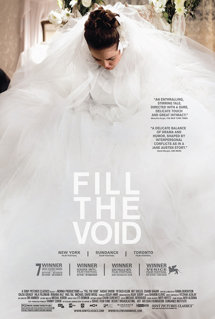 |
| Tilikum In His Bath Tub-Jacuzzi Size for Him? |
For a conventional informative review click on this LINK.
nice review
http://journalstar.com/entertainment/movies/review-blackfish-is-compelling-documentary-about-killer-whales-in-captivity/article_b508e0f4-f113-5a68-a0fa-7fe4955ba5bf.html
Now that the literal is out of the way what else is going on?
The movie is shocking. It does not resort to violence porn as it so easily could have done. Tilikum kills a number of people, his trainers, especially Dawn who is the most expert and aware, the trainer who trains the trainers. And we watch him do it.
He pulls her down by the foot, then she swims up, gasps for breath, is pulled down again, comes up again, and each time she is getting weaker and more desperate. He has grabbed her foot at the side when she wasn't looking. This is not part of the act. This was an impulsive movement on Tilikum's part.
And we watch as we watch a kitten playing with its first mouse, or grasshopper, etc. At what point does play turn into kill. Does the object of play become prey?
Dawn has been the one to train Tilikum, teach him tricks, reward him with fish and petting, establishing what she thinks is an attachment bond with him.
Is this the way Tilikum perceives her?
There is complicity between the master/slave, between the captive/hostage and Baudrillard has written extensively on this. What is the complicity here?
The afternoon this happens the show was a disaster. None of them did the tricks they were supposed to do. So Dawn tries to save the performance with ever reliable and big star Tilikum who always turns in a good performance.
After it is over when Dawn is not aware, Tilikum grabs her foot as she walks by and Tilikum's game begins.
Now we are going to play a game MY way!
Each pod in the wild has a separate language. I guess we could think of the pod as a tribe?
They are captured and taken from it, put in with others from different pods/tribes and they have no common language anymore.
But what if the orcas are evolving linguistically while in captivity?
What if they are secretly, subversively ruining their performances. Killing a trainer who is the closest they can get to a human to do it.
We know there are killer elephants. Rogue elephants they are called. Thomas Edison even designed an electric chair with outrageous electric current to perform a death sentence on an elephant in his chair which he wanted to popularize. It took even more current than anticipated to kill that elephant who had probably been tortured beyond its endurance. I remind you of the recent book and movie Water For Elephants.
We also watch Tilikum playing HIS game with a male trainer who remains cool even under his potential death sentence while an audience, probably thrilled, is watching.
It reminds me of the time I saw Ringling Bros and watched Wallenda ride a bike across the rope each time going across and adding another member of the troupe - his family - until they are balancing on his shoulders, just piled on and there is some slack in the rope in the middle and the bike begins to stall.
He backpedals, goes forward, backs up again, all the time to keep moving and the entire audience in Philadelphia in 1949 is hushed into silence. It is awful.
The clowns come out for distraction but I cannot take my eyes off the rope. And I see how mesmerizing it is to watch what may be a terrible death. There is no net. And even with one the bodies would crush each other.
It is this fascination which makes one slow at a road wreck, to see dead bodies, mutilated bodies. Horror as obscenity.
And SeaWorld knows this well.
The male trainer cools it and pulls it off making for the barrier as fast as he can swim with Tilikum right after him. They give him oxygen. He is bloody.He smiles and laughs for the camera.
 But we have watched and seen how close, how very very close it was for him. We are not fooled the way the audience is fooled. The way the media has tried to fool us once again. The newspapers. The TV. We have seen and we are not tourists at SeaWorld enjoying ourselves and willing to go into denial to continue having a great time.
But we have watched and seen how close, how very very close it was for him. We are not fooled the way the audience is fooled. The way the media has tried to fool us once again. The newspapers. The TV. We have seen and we are not tourists at SeaWorld enjoying ourselves and willing to go into denial to continue having a great time.
After all, it is a great job, and he doesn't want to lose it, does he.
The sickening part is that the trainers who care the most for the orcas and Tilikum are the most complicit and the most vulnerable. The ones who care the most are the ones at risk.
But the ones who care the most, who obtain the most incredible performances from Tilikum, are the ones responsible for keeping the exploitation ongoing. A circle eating its own tail. The Eternal Return of Nietzsche.
In the movie ex trainers are interviewed and discuss how they lied for the camera and the audience, how they denied, how they rationalized until they couldn't anymore. They have come clean for us.
We see the court case against SeaWorld and the attractive blond lawyer for SeaWorld who is appealing the court's demand for barriers and no in the water participation with the orcas. (Never hurts to have a sexy lawyer does it?)
We need a new definition of love.
At the heart of love à la française lies the idea of
freedom. To love truly is to want the other free, and this
includes the freedom to walk away. Love is not about
possession or property. Love is no prison where two
people are each other’s slaves. Love is not a commodity,
either. Love is not capitalist, it is revolutionary. If
anything, true love shows you the way to selflessness.
Here's Masha Tupitsyn quoting Toni Morrison in her book Love Dog:
In The Bluest Eye, Toni Morrison writes (and I have quoted this many times), “Love is never any better than the lover. Wicked people love wickedly, violent people love violently, weak people love weakly, stupid people love stupidly. There is no gift for the beloved. The lover alone possesses his gift of love.”
Here's Judith Butler:
“Love is not a state, a feeling, a disposition, but an exchange, uneven, fraught with history, with ghosts, with longings that are more or less legible to those who try to see one another with their own faulty vision.” - Judith Butler
These trainers who loved Tilikum loved stupidly. All they did was make billions for SeaWorld. They were captives and exploited as much as Tilikum. Which is why it took them so long to wake up.
SeaWorld is now breeding their own orcas. To watch Tilikum being pumped of semen to artificially impregnate females is one of the saddest things I have ever seen.
I could feel no sympathy for the humans Tilikum killed. He is a David against Goliath.
Lilly was a researcher who worked with dolphins. Dissecting their brains as a neuro-physiologist he came to see the horror of his work even when he began to study their behavior while alive and let them all go. He advocated this from then on. They should not be in captivity.














































